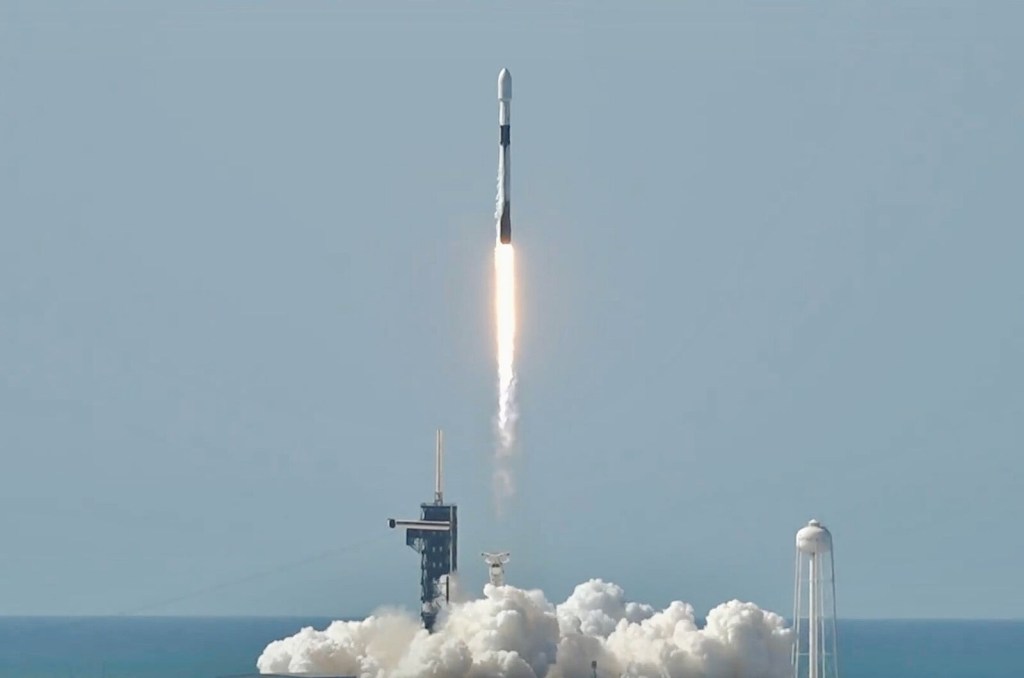WASHINGTON — On July 1, a SpaceX Falcon 9 rocket successfully launched a European satellite with a dual mission: to collect critical weather data and monitor atmospheric pollution. The launch took place from Cape Canaveral Space Force Station in Florida, marking another milestone in international collaboration for environmental monitoring.
The satellite, named MTG-I1, is part of the Meteosat Third Generation (MTG) system, a collaborative effort between the European Space Agency (ESA) and EUMETSAT, the European Organization for the Exploitation of Meteorological Satellites. This mission aims to enhance weather forecasting capabilities and provide valuable data on air quality, which is crucial for both scientific research and public health policy.
Enhancing Weather Forecasting and Pollution Monitoring
The MTG-I1 satellite is equipped with advanced instruments designed to provide high-resolution data that will improve short-term weather forecasts and climate monitoring. Additionally, it will track atmospheric pollutants, offering insights into the sources and distribution of air pollution across Europe.
According to ESA, the satellite will operate in geostationary orbit, allowing it to continuously monitor the same area of the Earth’s surface. This capability is essential for tracking rapidly changing weather patterns and providing timely data to meteorologists and environmental scientists.
“The launch of MTG-I1 represents a significant step forward in our ability to monitor and understand Earth’s atmosphere,” said Josef Aschbacher, Director General of ESA. “This satellite will provide data that is vital for improving weather forecasts and for understanding the impact of air pollution on climate and human health.”
International Collaboration and Technological Advancements
The launch of MTG-I1 is a testament to the strong international collaboration between European nations and the technological advancements achieved in satellite design and deployment. The MTG system is expected to revolutionize weather forecasting and environmental monitoring in Europe by providing unprecedented levels of detail and accuracy.
Historically, Europe has relied on a series of Meteosat satellites for weather monitoring since the late 1970s. The MTG system represents the latest evolution in this lineage, incorporating cutting-edge technology to meet the demands of modern meteorology and environmental science.
By the Numbers: The MTG-I1 satellite is expected to operate for over a decade, providing continuous data that will support a wide range of applications, from agriculture to disaster management.
Implications for Climate Science and Public Policy
The data collected by MTG-I1 will have far-reaching implications for climate science and public policy. By providing accurate and timely information on weather patterns and air quality, the satellite will support efforts to mitigate the effects of climate change and improve public health outcomes.
Experts believe that the enhanced data from MTG-I1 could lead to more effective policy measures to reduce air pollution and its associated health risks. Furthermore, the satellite’s ability to monitor extreme weather events could aid in disaster preparedness and response, potentially saving lives and reducing economic losses.
Looking ahead, the successful deployment of MTG-I1 sets the stage for future launches in the MTG series, which will continue to expand Europe’s capacity for environmental monitoring and climate research. As global concerns about climate change and air quality grow, the data provided by these satellites will be more critical than ever.
In conclusion, the launch of the MTG-I1 satellite by SpaceX’s Falcon 9 rocket marks a significant achievement in the field of environmental science and international cooperation. As the satellite begins its mission, the world watches with anticipation for the valuable insights it will provide into our planet’s atmosphere.
About The Author
 Developing Nations Gain Nutritional Edge with Seafood Imports
Developing Nations Gain Nutritional Edge with Seafood Imports Puzzle Game Empowers Kids to Outthink AI in Problem-Solving
Puzzle Game Empowers Kids to Outthink AI in Problem-Solving Jefferson Lab: Pioneering Advances in U.S. Physical Sciences
Jefferson Lab: Pioneering Advances in U.S. Physical Sciences Columbia University Settles $9 Million Lawsuit Over Misleading U.S. News Rankings
Columbia University Settles $9 Million Lawsuit Over Misleading U.S. News Rankings Red Panda Injured During WNBA Halftime Performance
Red Panda Injured During WNBA Halftime Performance